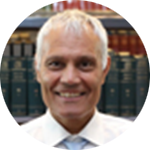Home » Research Projects » Climate Change Impact on the UAE Artificial Islands. Monitoring the coastal risk in UAE

Professor of Environmental geomorphology-Geology, SUAD (Leading as PI)
With a number of state-of-the-art artificial islands projects, such as Palm Island, World Islands, Jebel Ali Islands, Dubai has been positioned in the last two decades as the recent capital of architectural achievements. The economy revenues from touristic investments have become a major attractive reason for mega investments organizations such as MERAAS, KLIENDEST, EMAAR. Abu Dhabi as well invested in a number of touristic/real estate reclamation projects, such as Yas Island, Al Mariyah Island and Nourai Island.
Being one of the most challenging concerns for the sustainability master development and planning for the upcoming decades, the climate change impact has been weighted as a major factor in the UAE policy. Since 2016, The UAE Government has renamed officially the “Ministry of Water and Environment” to the new named “Ministry of Climate Change and Environment”. Two important factors are among the major impacts, which are:
The Increase of Carbon dioxide emission by 25 % since 1958. The Rise of the sea level rate drastically from 1.7 mm/year to 3.2 mm/year. This research proposal focuses on the geological/geotechnical one for a special type of construction technique, which are the artificial islands. The challenge of infrastructure sustainability against climate change, ocean acidification and sea level rise are on different fronts of impact mitigation (social, economic, environmental, political, geological, etc.).
This project supports PhD student Walid Mekni, the first PhD student from SUAD, registered in Sorbonne University doctoral school, supervised by Kosmas Pavlopoulos.


Contact us